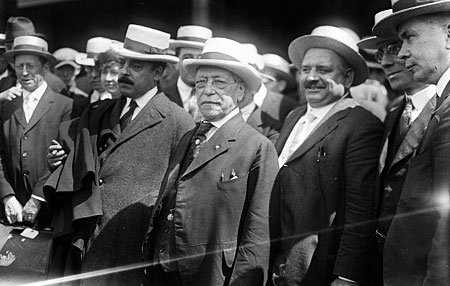Labor Unions
Formal unions were not new to America. Shoemakers formed collective guilds in the 1600s. The National Trades Union was organized in 1834. In the late 1800s, working conditions and low pay for the working class in contrast to the lifestyles of factory owners spurred an increase in union participation nationally. The National Labor Union was organized in Baltimore, Maryland in 1866. It represented 60,000 members but failed when membership declined.
The Knights of Labor was formed in Philadelphia in 1869. It organized men and women both skilled and unskilled into one union. The organization did not have much central direction but its platform included the abolition of child labor and an eight-hour workday. The Knights of Labor remained low-key until the late 1870s. Under the leadership of Terence Powderly, the Knights of Labor grew to almost 750,000 members. Some of its members organized a series of strikes, or work stoppages, against the wishes of Powderly and when the strikes failed to produce change, the Knights of Labor began to lose membership and disappeared by the early 1890s.
In 1881, the American Federation of Labor (AFL) under the leadership of Samuel Gompers, a cigar maker who came to the U.S. from London, was organized. The AFL organized skilled workers into small networks devoted to a specific trade. The AFL openly used strikes, and boycotts against the products produced by their employers, to force them to listen to demands that included an eight-hour workday, better working conditions, and an increase in wages. They believed in collective bargaining whereby representatives of all workers negotiated with employers. The AFL believed in closed shop practices; therefore, employers would only hire union members. The members believed that they had more power as a group.

Samuel Gompers